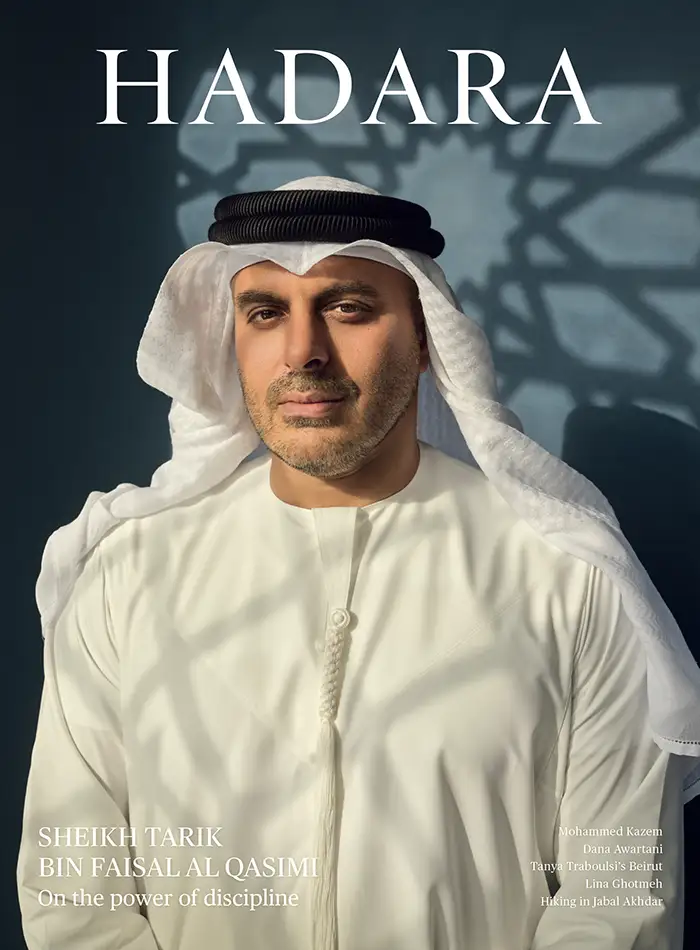Industrial Strength
Low-rise and gritty, the warrens of workshops of Sharjah’s Industrial Area are important for designer Ammar Kalo.
By Catherine Bolgar
“The introduction is just chaos. There’s a bunch of people driving against traffic, on a bike, crossing the road,” says Ammar Kalo, high-end furniture designer and associate professor and director of labs at the College of Architecture, Art and Design at the American University of Sharjah. “I describe it to people as ‘Mad Max’ land, the apocalyptic industrial landscape.”
He is speaking of the vast swathe of Sharjah’s urban centre known as the Industrial Area. Just across Al Wahda Street from the stylish Al Majaz and Corniche waterfronts, the Industrial Area sprawls across nearly a third of the city, butting up against shopping and residential zones, which increasingly encroach on the unlovely but vital neighbours. The new Al Sajaa district on the far side of Emirates Road has attracted the bigger industrial players. Meanwhile, the smaller ones hang on to this central location where their customers know them—and where to find them.
Workshops punctuate collections of low-rise warehouses, with scattered concentrations by trade—automotive, woodworking, welding, light manufacturing, as well as hardware shops and other suppliers, plus souks selling new and used parts, tools and materials. Split into 18 zones, the Industrial Area accounts for an important chunk of Sharjah’s gross domestic product.
Kalo spends a lot of time in the Industrial Area, and its unusual charms have grown on him. These have zero to do with the architecture and everything to do with the people’s know-how. “I do a lot of my work at the university, in terms of prototyping and making. But ultimately I have to rely on somebody to finish this piece or polish that metal piece,” he says. “So I end up going on these journeys to try to find someone.” That could be to select lumber for his tables, seating, and shelves, to source a special epoxy resin, or to tap the local tradesmen’s prowess or heavy equipment.
“As frustrating as it is, the moment you find somebody who can do the job you want the way you want it, you save that person,” he says. “You protect them. They’re rare.”
Because all his furniture is custom-made, Kalo typically asks for unusual things or asks for things to be done in an unusual way. “A million places can do the job, but they’re not willing to be flexible,” he says. “Even though they have the right equipment to do what I need, it’s a matter of convincing them they can do it another way. I have to find people willing to go along with my vision and do those jobs, so I can just walk in and start talking to them about projects.
“Now I have my little database,” Kalo says. “If I need something—to do woodworking and finishing, there’s this guy in, like, Area Four. That becomes at least comforting. I know the traffic patterns, I know when to go, I know what the guy is going to say, how much it’s going to cost.”
The hardest aspect is the traffic, which runs the gamut, from huge lorries to smaller trucks, vans, cars, motorcycles and bicycles, each paying more attention to potholes or stopped vehicles than to rules of the road. The main thoroughfares around the Industrial Area have two or three lanes of traffic in each direction, but within the blocks of each numbered area the streets may be dirt. Many of the workers are immigrants who live in structures behind their workplaces. The businesses generally have their garage doors open because, regardless of their size, air conditioning is rare.
“The people who work there need stamina,” Kalo says. Last summer, on a trip to a large metal fabricator, he saw the workers wearing overalls, masks, helmets and heavy welding gear for protection despite the lack of air conditioning. “For someone who hasn’t been there, it’s always an eye opener,” he says.
Photo: Siddharth Siva





